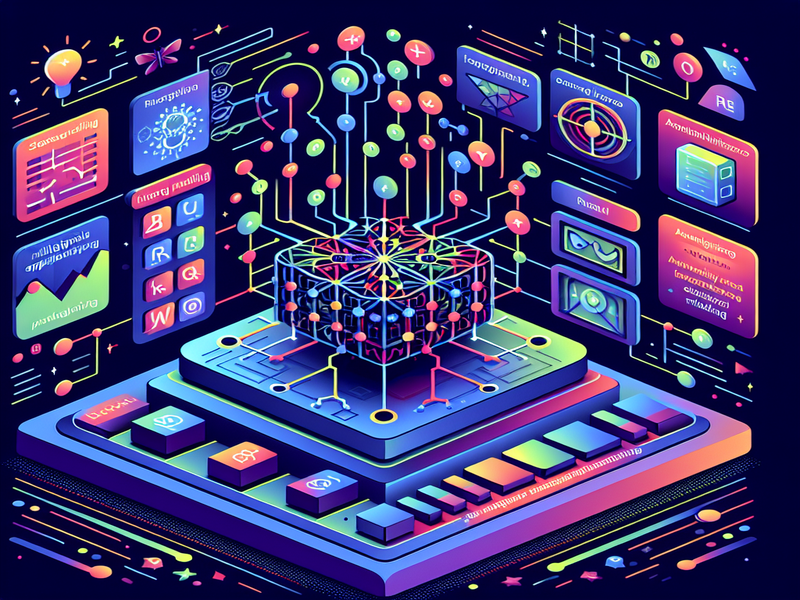- Updated: March 25, 2025
- 4 min read
RWKV-7: A New Era in Recurrent Neural Networks for Efficient Sequence Modeling
Unveiling the RWKV-7 Model: A Revolution in Recurrent Neural Networks
In the ever-evolving landscape of artificial intelligence, the RWKV-7 model emerges as a groundbreaking advancement in recurrent neural networks. This innovative model is set to redefine the benchmarks of sequence modeling, offering unprecedented performance and efficiency. In this article, we delve into the significance of the RWKV-7, its key innovations, and its potential applications, providing a comprehensive understanding for AI researchers, technology enthusiasts, and machine learning professionals.
What is the RWKV-7 Model?
The RWKV-7 model, also known as “Goose,” is a novel sequence modeling architecture that has set new standards in the realm of recurrent neural networks. Unlike traditional models, RWKV-7 operates efficiently with linear complexity and constant memory usage, making it a formidable alternative to autoregressive transformers. This model is particularly noteworthy for its ability to handle long sequences without the high computational and memory demands typically associated with such tasks.
Key Innovations and Performance Metrics
RWKV-7 introduces several key innovations that enhance its performance metrics significantly. These include:
- Vector-Valued State Gating: This mechanism allows for adaptive in-context learning rates and a refined value replacement approach, improving the model’s expressivity and state-tracking capabilities.
- Token-Shift and Bonus Mechanisms: These features, layered on the RWKV-6 architecture, facilitate efficient state evolution and dynamic state transitions.
- ReLU² Feedforward Network: This network enhances computational stability and efficiency, ensuring robust performance across various tasks.
These innovations contribute to RWKV-7’s ability to outperform its predecessors and achieve state-of-the-art results across multiple benchmarks, including multilingual tasks. The model’s efficiency is further highlighted by its ability to maintain constant memory usage and inference time per token, even when trained on significantly fewer tokens than its competitors.

Comparison with Other Models
When comparing RWKV-7 with other models, its superiority becomes evident. Traditional autoregressive transformers, while powerful, suffer from quadratic complexity in sequence length, leading to high computational costs. In contrast, RWKV-7’s recurrent architecture with compressive states offers linear complexity, making it more efficient for long-sequence tasks.
Moreover, RWKV-7’s performance on English language tasks is comparable to that of its competitors, despite being trained on fewer tokens. This efficiency is achieved through the model’s innovative design, which includes a structured approach to sequence modeling and the use of trainable matrices for computations.
Applications and Multilingual Support
The versatile nature of the RWKV-7 model opens up a plethora of applications across various domains. Its ability to handle multilingual tasks with ease makes it an ideal choice for global applications. The model’s training corpus, RWKV World v3, enhances its capabilities in English, code, and multilingual tasks, ensuring comprehensive support for diverse applications.
Furthermore, RWKV-7’s efficiency in handling computationally complex tasks, such as associative recall and long-context retention, makes it suitable for applications in natural language processing, machine learning, and AI innovations. The model’s ability to recognize all regular languages and solve problems beyond TC₀ complexity further underscores its potential in advancing AI research and development.
Conclusion: A Call to Action
In conclusion, the RWKV-7 model represents a significant leap forward in the field of recurrent neural networks. Its innovative architecture and efficient performance metrics make it a compelling alternative to traditional models, offering new possibilities for AI researchers and professionals. As the development of larger datasets and models continues under open-source licensing, the RWKV-7 model invites further exploration and collaboration in the realm of efficient sequence modeling.
For those interested in exploring the potential of RWKV-7 and its applications, consider leveraging the OpenAI ChatGPT integration on the UBOS homepage. Additionally, the Enterprise AI platform by UBOS offers tools and resources to harness the power of AI innovations for business growth.
For more information on the RWKV-7 model, please refer to the original news article.
